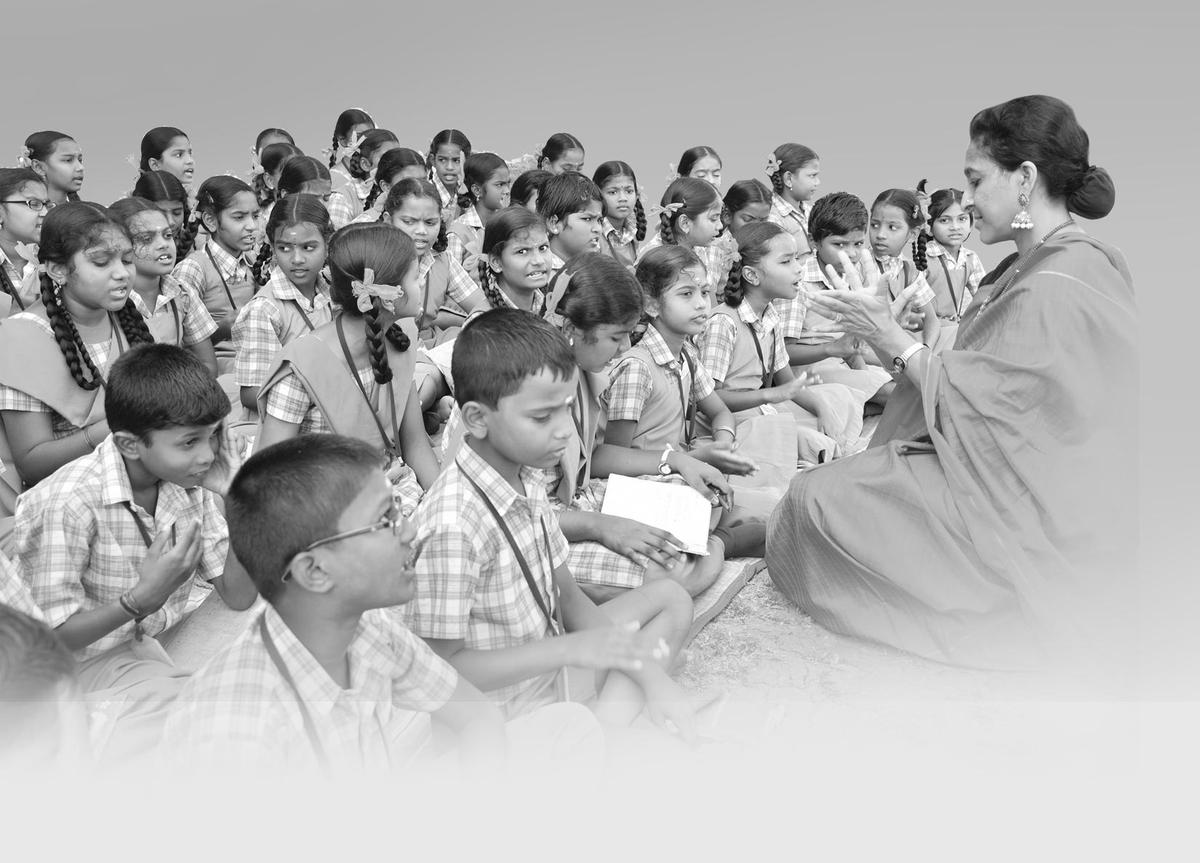On January 1, 2024, when Bombay Jayashri Ramnath receives the Sangita Kalanidhiat the Music Academy, Chennai, where she has performed numerous times, it will be another landmark moment in her exciting musical journey. For the past four decades, like a troubadour who sets no boundaries, Jayashri has been traversing the musical landscape exploring swaras and songs.
Jayashri developed the ability to experience music as a liberating force during her growing-up years in Mumbai. Though she chose to specialise in Carnatic music, Jayashri was exposed to Hindustani, Western classical, folk songs and Hindi film music. In those formative years, she enjoyed being surrounded by all kinds of tunes. When she turned a performer, Jayashri carried these influences to design a distinct classical singing style, which is high on melody, follows an unhurried pace and has a calming effect. Her tryst with this diverse musical palette also gave her the courage to engage with her art in new ways.
In 2016, after singing Sangam poetry with the Avanti Chamber Orchestra at a ravine amphitheatre in Lapland, Jayashri realised how such musical outings and collaborations open one’s mind to learning and sharing. She’s performed at the Zulu Carnival in Africa, at a 100-year-old cathedral in Spain, on the lawns of a museum in Cordoba and the Huvilla Festival Tent in Helsinki. Everytime she sang at venues far from her native land, she was struck by how music created a world of its own, beyond style, language and culture.
The Carnatic vocalist during a concert
| Photo Credit:
Special Arrangement
At home, apart from performing concerts, Jayashri was always looking out for ways to use music for a larger cause. She would readily associate with initiatives that created space and opportunity for youngsters to experience classical music. Well-aware of music’s healing power, she set up the Hitam Trust, to sing for children with autism. She has also been working to create sing-along learning material for the differently-abled. To support Aim for Seva’s efforts to make art accessible to all, Jayashri regularly visits Manjakudi in Kumbakonam to teach the village children.
Jayashri’s systematic training, initially under T.R. Balamani in Mumbai and later under violin maestro Lalgudi Jayaraman in Chennai, and her constant tryst with varied musical genres have helped her create a broader vision and deeper purpose for her art.
In February 2013, when Jayashri walked the red carpet in an elegant red Kanjeevaramsari at the Dolby Theatre in Los Angeles, she became the first Carnatic musician to be nominated for the Oscars for ‘Kanne Kannmaniye’ a lullaby and the title song of Life of Pi. Apart from the international recognition, it reiterated the creative power of classical music.
A decade later comes the Sangita Kalanidhi. Before the start of the Margazhi Music Season, Jayashri shares what the award means to her and her diverse artistic pursuits.

The singer teaching kids at Manjakudi village
| Photo Credit:
Courtesy: bombayjayashri.com
Right from your initiation, you have always viewed music from a broader perspective. How has it helped shape your musical ideas?
I was fortunate to get to experience and appreciate different genres from a young age. More importantly, I was blessed with some of the greatest gurus, who have shaped my musical ideas.
You were always eager to position your music in different settings — concert, cinema, collaborative albums, causes… Did this approach push you to explore the finer nuances of Carnatic music and strengthen your bond with the art?
Carnatic music provides a strong and deep foundation and empowers one to explore various formats and genres. Every concert, collaboration, and recording is a learning experience. I have drawn greatly from these opportunities.
How do you plan a kutcheri? And what factors make it successful?
The city I am performing in and the organisation play an important role in planning the repertoire of a kutcheri. Every audience is different. And, over a period of time, one learns to cater to their likes.
How do you establish and maintain a rapport with accompanists, which adds a special flavour to the concerts?
I have had the privilege of being supported by some of the best accompanying musicians on the violin, mridangam, kanjira and ghatam. A musical conversation among us before a concert continues on stage too. Over a period of time, a rapport builds up and makes the performance extremely enjoyable. The role of accompanying artistes is crucial to a concert’s success.
Has your exposure to both Carnatic and Hindustani music helped you better understand the classical music system? Understanding both systems has its advantages. It has helped me get a firm grip on the finer nuances of the Indian classical music tradition. That said, it is important to define one’s own space in art.
What advice would you give young Carnatic enthusiasts?
The younger musicians are talented and promising. They will go a long way in ensuring our music thrives. Perseverance and hard work are the key to a long successful journey, and I’m sure they are aware of this.
The Sangita Kalanidhi title is a great honour in a Carnatic musician’s life. Do you think it also brings with it the responsibility of preserving and promoting the tradition, even while adding to it in your own way?
Yes, the great honour comes with responsibility. Over the years, stalwarts have shown the way, we just need to follow them.
How would you sum up your journey?
Nothing can be more satisfying than being able to make your passion your life’s calling. And, while at it, also, receive the love and affection of the audience.